
 |
|
|
Soybeans
Volume 60 Number 20 Date 12/03/2015 SOYBEAN APHID - Densities remained well below the 250 aphid-per-plant threshold in the vast majority of Wisconsin soybean fields in 2015. Colonization of soybeans began by June 1, but aphid pressure increased slowly and did not intensify until early August. Control measures were initiated in a few fields by August 12 and continued throughout the month. According to the results of the annual survey, 78% of sites sampled in August had low average densities of less than 50 aphids per plant, while 21% contained moderate counts of 51-249 aphids per plant. A single Winnebago County field sampled on August 24 had an economic population of 313 aphids per plant. The low state average aphid count of 35 per plant at 108 sites surveyed from August 6-26 indicates that most soybeans did not require treatment for aphids this year. GREEN CLOVERWORM - Larvae became common in soybeans during the second half of July. Populations were not particularly large, although combined defoliation by cloverworms, grasshoppers and Japanese beetles was severe enough in a few western Wisconsin fields to justify control by mid-August. OBLIQUEBANDED LEAFROLLER - This generalist leafroller was unusually abundant this season. Larvae began emerging by early June and were prevalent in soybean fields throughout July. Most of the larval population pupated by early August. Their sporadic appearance in Wisconsin soybeans was primarily a curiosity and not of economic importance. -- Krista Hamilton, DATCP Entomologist PHYTOPHTHORA ROOT ROT - A June survey to determine the prevalence of soybean root rot caused by Phytophthora sojae found a 38% positive rate among the 50 samples tested. This substantial level of prevalence suggests that root rot was a common problem again this season, almost comparable to the 2014 results of 49% of fields sampled, the highest incidence of root rot since the DATCP soybean root rot survey began in 2008. Counties in which P. sojae was confirmed were Buffalo, Calumet, Chippewa, Columbia, Dodge, Dunn, Iowa, Kenosha, Lafayette, Manitowoc, Outagamie, Polk, Rock and Winnebago. A recently-described Phytophthora species, P. sansomeana, was detected again this year in soybean roots from Dodge and Jefferson counties. Phytophthora sansomeana had previously been found on soybean in eight other counties: Calumet, Dane, Dunn, Eau Claire, Green, Outagamie, Marathon and Sheboygan, for a total of 10 counties since the first Wisconsin detection in Jefferson County in 2012. Two other species of Phytophthora, P. inundata and P. iranica, were also found in 2015. The former was detected in soybean roots from Buffalo County, while the latter was isolated from plants from a Lafayette County field. It is not known if these new species cause disease on soybeans. Cumulative results of this eight-year survey include the detection of five distinct Phytophthora species in the state's soybean fields (also P. pini and P. sp. personii), four of which had never been found on soybeans in Wisconsin prior to this effort. SOYBEAN VIRUSES - Fifty soybean fields were sampled and tested for alfalfa mosaic virus (AMV), soybean dwarf virus (SbDV), and soybean vein necrosis-associated virus (SVNaV) this season. Twelve percent of fields were infected with SbDV, a marked decline from the 24% infection rate in 2014. Alfalfa mosaic virus was found in 12% of fields tested compared to 3% the year before. Soybean vein necrosis-associated virus, a tospovirus first detected in Wisconsin in 2012, was found in 6% of samples. The detection of SVNaV has declined since its initial find in 2012 when 35% of fields tested positive. Soybean vein necrosis-associated virus is transmitted by thrips; the decrease in incidence may be associated with lower thrips populations in 2015. The PIB Laboratory has surveyed for AMV, SbDV and other soybean viruses since 2003. -- Anette Phibbs, DATCP Plant Pathologist 
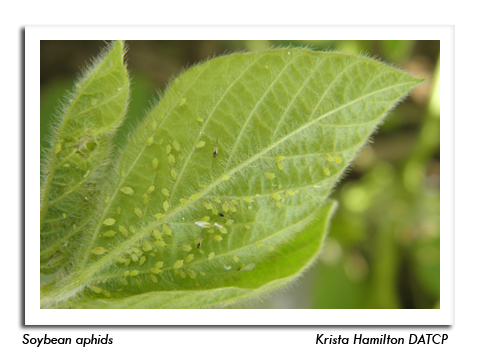
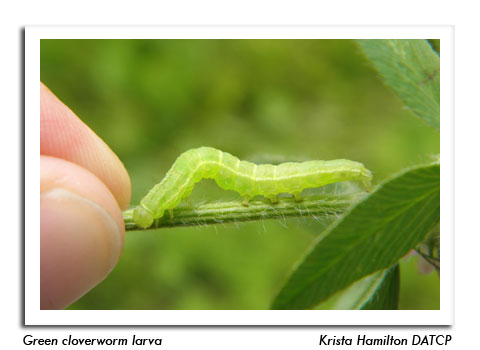
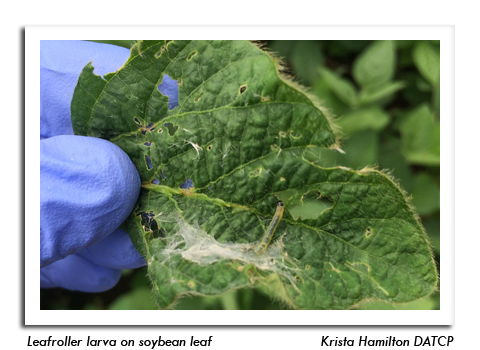
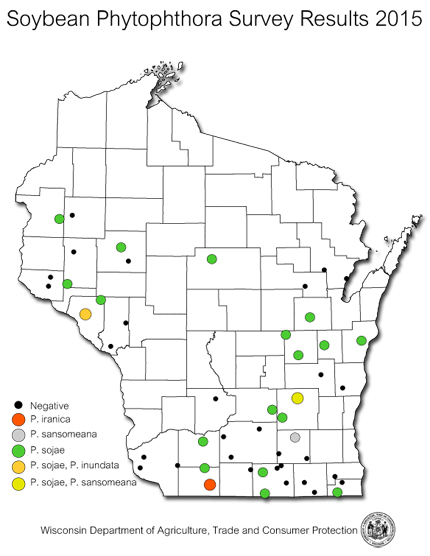
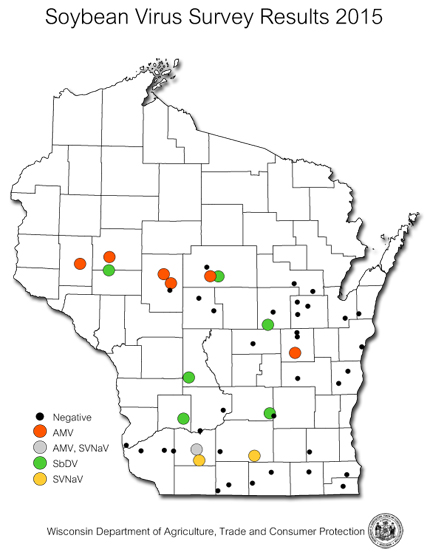
|
|
|